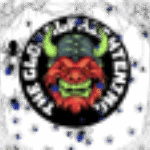Have you ever looked at a mundane household item—say, a kitchen knife or a teddy bear—and felt an unexpected heaviness? That’s the power of symbolism: transforming the familiar into something deeply unsettling. In this blog, I’ll walk you through how artists, filmmakers, and horror writers magnify terror by imbuing everyday objects with dread.
1. Start with familiarity, then breach it
Terror thrives not in the unknown, but in the familiar made strange. Horror creators often rely on household objects—microwaves, remote controls, shower curtains—to warp our sense of safety in the home. Writers of quiet horror rely on the everyday as the breeding ground for psychological dread: a quiet home scene becomes ominous when an object behaves “off”.
Example: In Psycho (1960), the ordinary shower curtain becomes a boundary between safety and violence. That moment forever changed how we see bathroom spaces.
2. Give objects a story through placement and context
A cigarette left smoldering on a table can imply someone just fled—or worse, something uncanny happened. Symbolism emerges not only from form, but from narrative context. A quiet, empty room with a ticking alarm clock or spinning fan suggests unseen presences.
Technique: Place the object in an unexpected spot—like a teddy bear on the floor of a bathroom or a broken doll on kitchen counter—and let our brains scramble to explain. That confusion feeds fear.
3. Use subverted associations
Some objects carry built‑in symbolism that you can flip. Toys once symbolizing innocence become frightening killers when possessed or misaligned. Films like Child’s Play (Chucky) and Annabelle flip childhood comfort into terror by giving their toys agency or malevolence.
Pro tip: Choose an object that’s supposed to reassure—stuffed animal, doll, music box—then invert that meaning by isolating it, distorting it, or hinting it “moves” on its own.
4. Apply design and transformation techniques
Artists translate this process into visual symbolism. For example, German artist Petrus Wandrey used blunt tools such as saws or axes incorporated into tables and sculptures to evoke destruction hidden in everyday forms.
Similarly, horror illustrators intentionally fill a scene with excessive detail (a style known as horror vacui) to overwhelm the viewer and create anxiety in ordinary settings.
This concept also appears in pop‑art‑meets‑horror movements, where colorful consumer objects—like cans or toys—are presented with grotesque marks or decay, turning the banal into disturbing.
5. Trigger unsettled perception by hinting not showing
Less is more. You don’t need to fully explain why the object is terrifying. A spinning chair, a mirror that subtly reflects absence, or a music box playing off‑key notes can be more unnerving than showing overt horror. Research shows fear thrives on ambiguity and what could be rather than what is.
Sound idea: Use household items to create an audio “soundscape”—a creaking door, dripping faucet, rattling tin can—suggesting something hidden is alive or about to strike.
6. Use apotropaic inversion
In many cultures, certain objects—mirrors, horseshoes, charms—were once used to ward off evil. In horror, inverting this protective function can be deeply unsettling: a cracked mirror that no longer shields, a horseshoe nailed upside-down becomes a curse. This symbolic twist plays on the audience’s expectations of safety being broken.
7. Leverage folk‑horror symbolism
Drawing on folk-horror traditions (like rural superstition, pagan rituals, sacrifices) imbues everyday objects—corn dollies, masks, wreaths—with chilling context. Examples from The Wicker Man to Midsommar show how simple ritual objects can carry subconscious dread.
Include a wreath of wildflowers that’s clearly rotted, or a carved effigy made from local wood—normal craft that hints at ritualistic purpose.
8. Technique checklist: how to design terror‑symbol objects
a. Choose a mundane object — something the audience trusts.
b. Isolate it — place it in a context where it feels wrong or uncanny.
c. Distort it — break, rot, over‑detail it, or hide it.
d. Provide narrative cue — a backstory hint (e.g. “It moved once….”)
e. Employ sensory trick — audio (ticking, whispering), visual (flicker, smear), or placement (off‑center, angle).
f. Invert cultural meaning — turn protective t‐shapes into threatening icons.
g. Let ambiguity linger — don’t resolve it fully; let fear simmer.
9. Case studies in object‑as‑terror
- Typewriter: In The Shining or Misery, a typewriter becomes a tool of obsession, dread, and impending doom; its repetitive clatter signals a disturbed mind at work.
- Microwave: In Gremlins, the microwave’s hum and confinement become horrors in themselves—objects that should comfort become lethal traps.
- Shower curtain: Already mentioned above—simple, normal, divisive. In Psycho, the curtain is the threshold between everyday routine and horror.
10. Why this technique works
- Psychological subversion: You’re betraying trust in familiarity.
- Cognitive dissonance: The brain tries to reconcile normal and abnormal simultaneously.
- Symbolic layering: Everyday objects are dense with personal meaning—flip that and you tap deep emotional unease.
- Economy of terror: A single creepy object can overshadow entire scenes.
Turning everyday objects into symbols of terror is a masterful blend of design, placement, and psychological misdirection. Whether you’re a writer, filmmaker, visual artist, or designer, the trick is deceptively simple: make the object familiar, then make it wrong.
Next time you pick up a teacup, a flashlight, or a kid’s toy, ask yourself: what hidden story could turn this into a symbol of dread?
Sources:
Reading: Household Horror: Cinematic Fear and the Secret Life of Every Day Objects by Marc Olivier
Creating Horror Atmosphere with Everyday Objects: Unravelling the Smoking Room Cinematic
Transferring Everyday Objects into Horror




